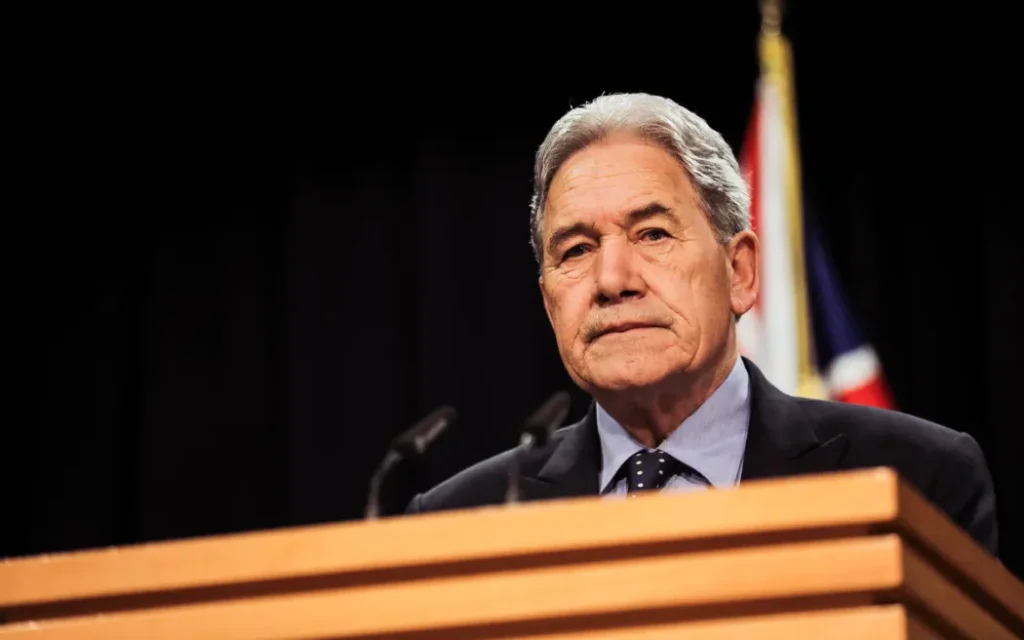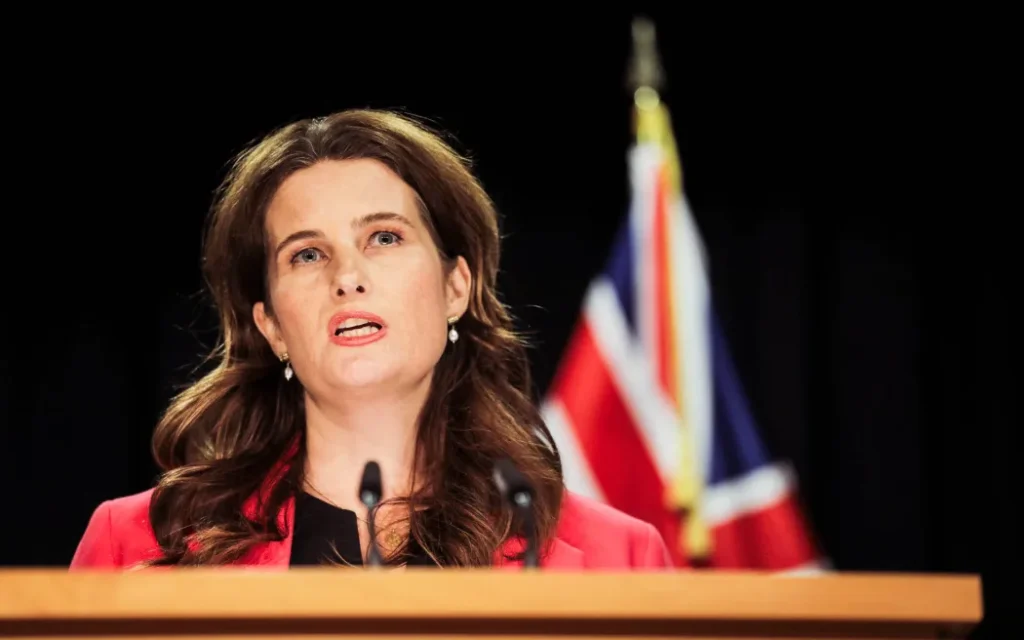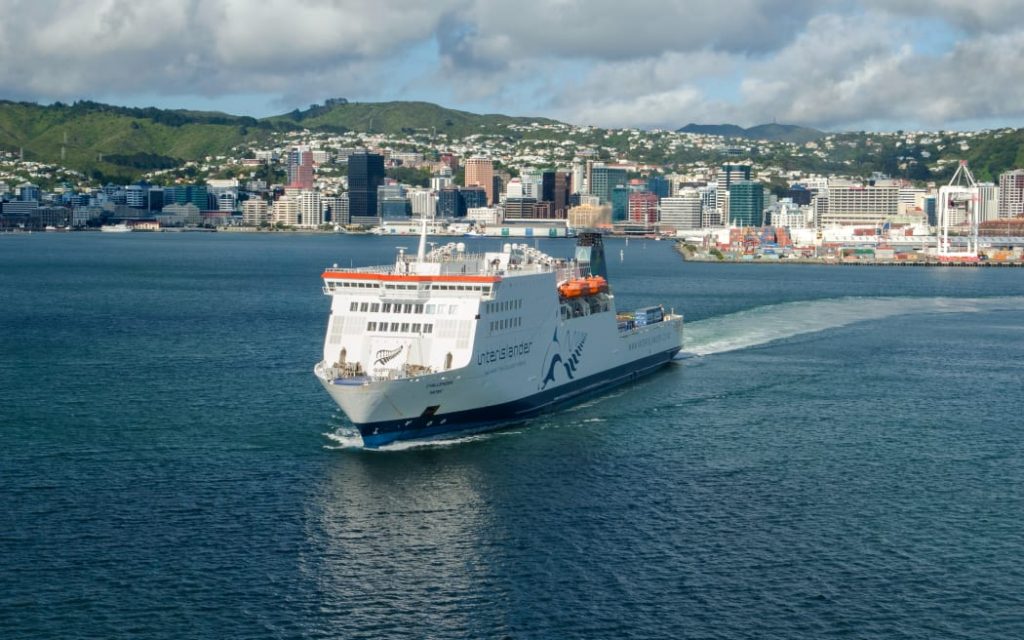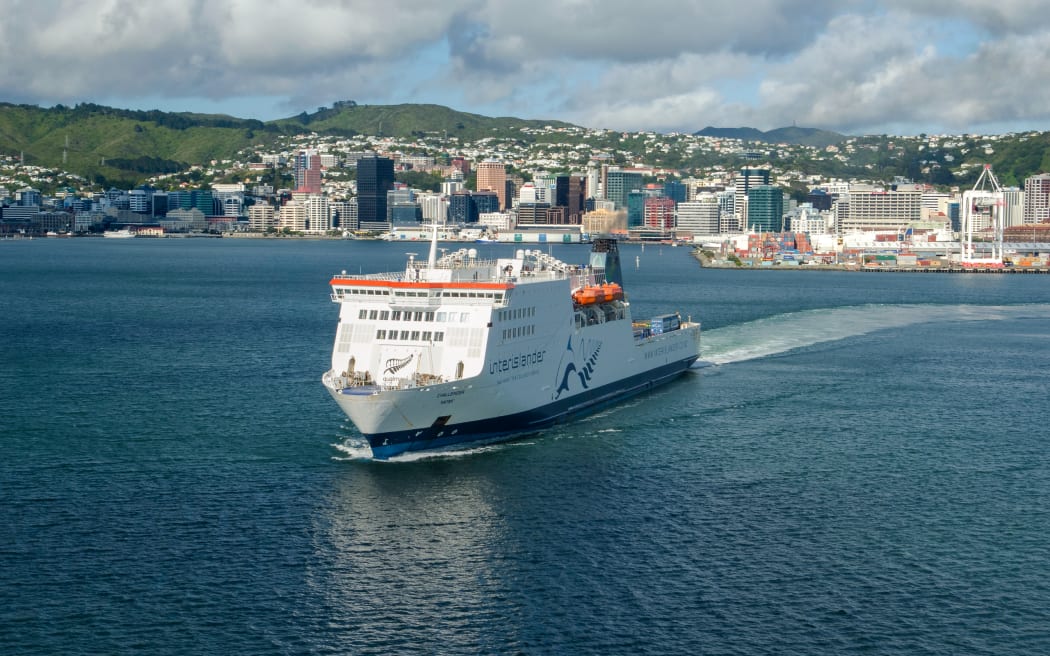The coalition has announced its alternative ferry replacement project, but many questions remain around the specific details.
A year after cancelling the previous government’s project, iRex – citing a cost-blowout due to the port infrastructure upgrades that would be required – the government has announced it will establish a company to procure two new vessels.
It is still not clear, however, what the cost of the ferries will be, who will build them, or whether they will be rail-enabled.
But Finance Minister Nicola Willis is notching it up as a big success.
“I’ve delivered. I’ve discharged my duty to the New Zealand people,” she said. “You were landed with an absolute dog of a project and a new government is going to clean it up.”
The government has set aside a funding envelope for the replacement project, but Willis would not say how much because it was “commercially sensitive”.
The procurement and contract negotiations had yot started, and Willis confirmed there was a possibility both ferries would not be able to take trains onboard.
There were currently three Interislander ferries, only one of them rail-enabled.
Peters at the tiller
On Wednesday, the prime minister announced his deputy Winston Peters would take on a new portfolio, minister for rail, with Willis saying she had appreciated the “wisdom and experience” he brought to Cabinet discussions in recent months.
Christopher Luxon said it was clear KiwiRail was underperforming, and given Peters’ “expertise and experience” he was confident Peters could ensure the new ferry replacement project delivered “in full, on time and under budget”.
On Wednesday, Willis told reporters the expected cost of the project was “commercially confidential until procurement and negotiations for the associated infrastructure have been completed”.
“However, a funding envelope has been established by Cabinet and the costs are expected to be much less than would have been the case with project iReX, even once break fees are included.”
The two new ferries are expected to be operational in 2029 – the point at which the existing ferries will reach the end of their operating lives.
The new company tasked with procuring the new ferries will have three shareholding ministers – Transport Minister Simeon Brown, Willis and Peters.

Winston Peters. Photo: Samuel Rillstone / RNZ
KiwiRail relieved of sailing duties, new ships might not carry trains
The secondary role of the company will be to work with the ports, KiwiRail and other stakeholders to ensure development planning is sufficiently advanced to allow Cabinet to make decisions on procurement by March next year.
As for the landside infrastructure costs at ports, no decisions have been made about what will be needed or how much it will cost.
But Willis said she was confident it could all be delivered, along with the ferries and the break-fee from the previous contract, for less than Labour’s iRex project.
“This is partly because the ferries will be smaller but also because the ports will not be gold-plated.
“To ensure the best possible solution is arrived at, the private sector is being invited to put forward alternative proposals for a ferry service during the first stage of the ferry process up till March.”
Willis insisted rail freight would still be transported from one island to the next, but had not made any commitments around how the new ferries would be equipped to do that.

Finance Minister Nicola Willis. Photo: Samuel Rillstone / RNZ
Asked what risks that might present to the rail freight industry, she said that was a question for KiwiRail to answer.
KiwiRail, in the first instance, was set to run the new ships.
“So long as minister Winston Peters is the minister for rail, the trains are in good hands.”
Peters said every option was being considered for the ferries and what rail capacity they may or may not have. He said it would be “grossly unwise” to rule anything out or in at this point of time.
Asked if he had confidence in the KiwiRail leadership team, he said he would answer that “when I’ve had a chance to talk to them”.
“I’m not making any decisions at this point in time – I just got the job five minutes ago.”

The Kaitaki Interislander ferry leaves Wellington Harbour. Photo: KiwiRail
New ships, ports expected to shoulder more cost
What was confirmed on Wednesday is that the new ferries would not be second-hand. Willis said she had explored that option.
“More than 21 owners of ships that were deemed to be suitable were contacted, and they weren’t for sale.
“The guiding criteria for us has been that we want ferries that are safe, reliable, economically efficient to run, and that are fully compatible with our rail service. We were not able at this juncture to find any second hand ferries that would meet that purpose.”
Willis denied the government had spent the past year doing very little when a ministerial advisory group report was delivered in March.
“More haste, less speed,” she offered in reply.
Port companies and councils had been consulted and the government had passed on expectations they meet as many of the costs as possible when it comes to landside upgrades.
“The port, as the owner of the assets should be – forgive me – the first port of call for the funding.”
The possibility of multi-user terminals – which would allow other ferries to dock – was explored, but Bluebridge had not expressed interest, at this stage.
RNZ
